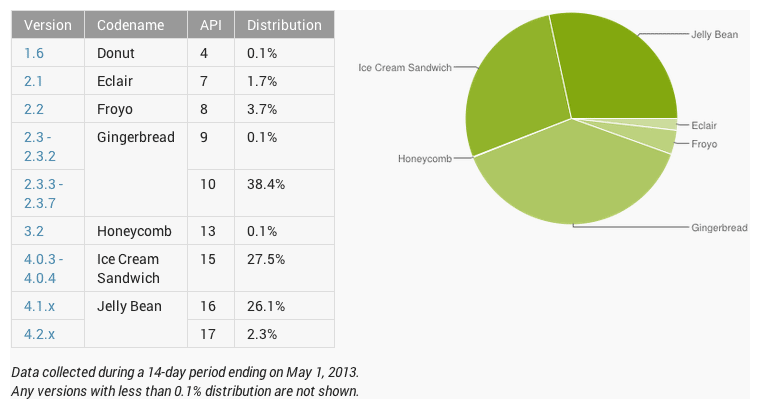Android Browser Countdown
Android’s poor browser has been the thorn in side of mobile web developers for quite some time. Dion Almaer once said that “Android WebKit is the closest thing to being the IE6 of mobile development”.
I agree. Back in 2011, I wrote that Google needed to step up. Thankfully, they have. Chrome for Mobile is a great browser.
But Chrome for Mobile is still a small percentage of what people on Android devices are using. A lot of this has to do with the fact that older versions of Android that cannot run Chrome still account for 44.1% of Android’s installed base.
Last month at the Breaking Development conference, many of the speakers talked about large installed base of Android browsers as being an impediment to pushing the web forward on mobile. The discussion reminded me of the efforts that the web community undertook to convince users to move off of IE6.
Web developers started encouraging users to upgrade to a newer version. Microsoft helped out by creating the IE6 Countdown web site which helped web developers figure out when IE6’s market share had gotten low enough that they no longer had to worry about it.
Microsoft and others created banners and warnings that encouraged people to install newer, more standards-compliant browsers.
I’ve thought a few times about how we should encourage Android users to upgrade their browsers, but in this case, there is no way for them to update to a new version of the Android browser and they can’t install Chrome on any device not running Android 4.x.
But while discussing this at Breaking Development, it was pointed out to me that even if people cannot update their browser to Chrome, many do have other options. They can install Opera Mobile or Firefox.
Maybe it is time to change our mindset towards the Android 2.x Browsers and instead of working around its many limitations, perhaps we should actively encourage people to switch to a better browser.
What do you think?

Jason Grigsby is one of the co-founders of Cloud Four, Mobile Portland and Responsive Field Day. He is the author of Progressive Web Apps from A Book Apart. Follow him at @grigs.


